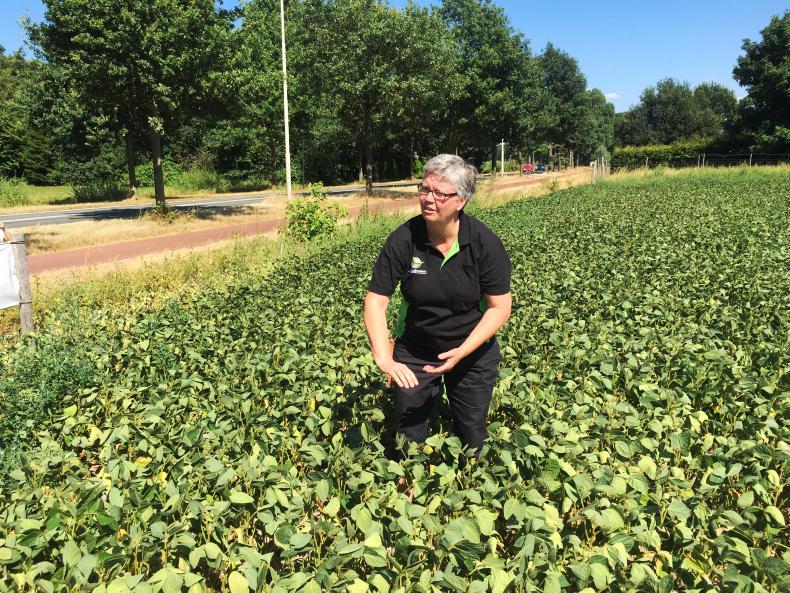Farmers have been growing soya beans in the Netherlands for the past six years and the crop has proven increasingly popular, with the area expanding from 375ha last year to 475ha sown by 90 growers this year. This is according to Henk Vermeer of Agrifirm co-op, which has been promoting it as an alternative to protein imports.
Results from last year show an average yield of 3t/ha, with the top 25% growers achieving 3.6t/ha. The average protein content was 41.6%. While Agrifirm originally introduced soya beans to the country to produce feed, “along the way we met Alpro and it became a food project, which is more profitable,” Vermeer said. The Danone-owned soy drink manufacturer buys 80% of the Dutch production and the rest goes to make feed. Alpro requires 43-45% protein content and mixes local supplies with North American imports to reach this target.
Agrifirm pays an equal price of €500/t to all growers, topped up with a protein bonus. According to Vermeer, the average net profit from soya beans was €685/ha last year, beating spring wheat (€517/ha) but below winter wheat (€702/ha). The top 25% of growers made more than with winter or spring wheat. “If you have rich soil, wheat does better, but on poorer soils soya bean is better,” Vermeer said.
Difficulties
Vermeer said that Dutch growers were successful at rhizobium inoculation, achieving good performance without nitrogen fertilisation. The main difficulties lay in harvesting, with many beans close to the ground lost if seedbeds were not level enough or where larger combines were used.
“Last year in our organic crop we had 4t/ha in the field but could harvest only 1t/ha,” said Jolanda Raaijmakers, a farmer in her second year growing soya beans in Best, in the southern Netherlands. Of her 100ha farm, 10ha are under soya beans, 3.5ha of which is organic.
When the Irish Farmers Journal visited Jolanda’s field in mid-July it was withstanding the drought well, with beans fully visible ahead of the autumn harvest. However, this year’s weather is testing the crop’s limits: “Soya can deal with short dry periods, but we’re now in trouble with only one parcel irrigated,” she said. Another field failed to germinate after a storm drowned it in 65mm of rain in half an hour earlier this year. Heavy rains also disrupted the harvest last year, but Jolanda’s farm still achieved yields of up to 3.5t/ha. She said she was interested in having soya bean in her crop rotation because ploughing back plant residue after harvest increases soil organic matter.
Agrifirm is now looking into ways of making soya bean usable as on-farm feed, with solutions such as mobile toasters.
